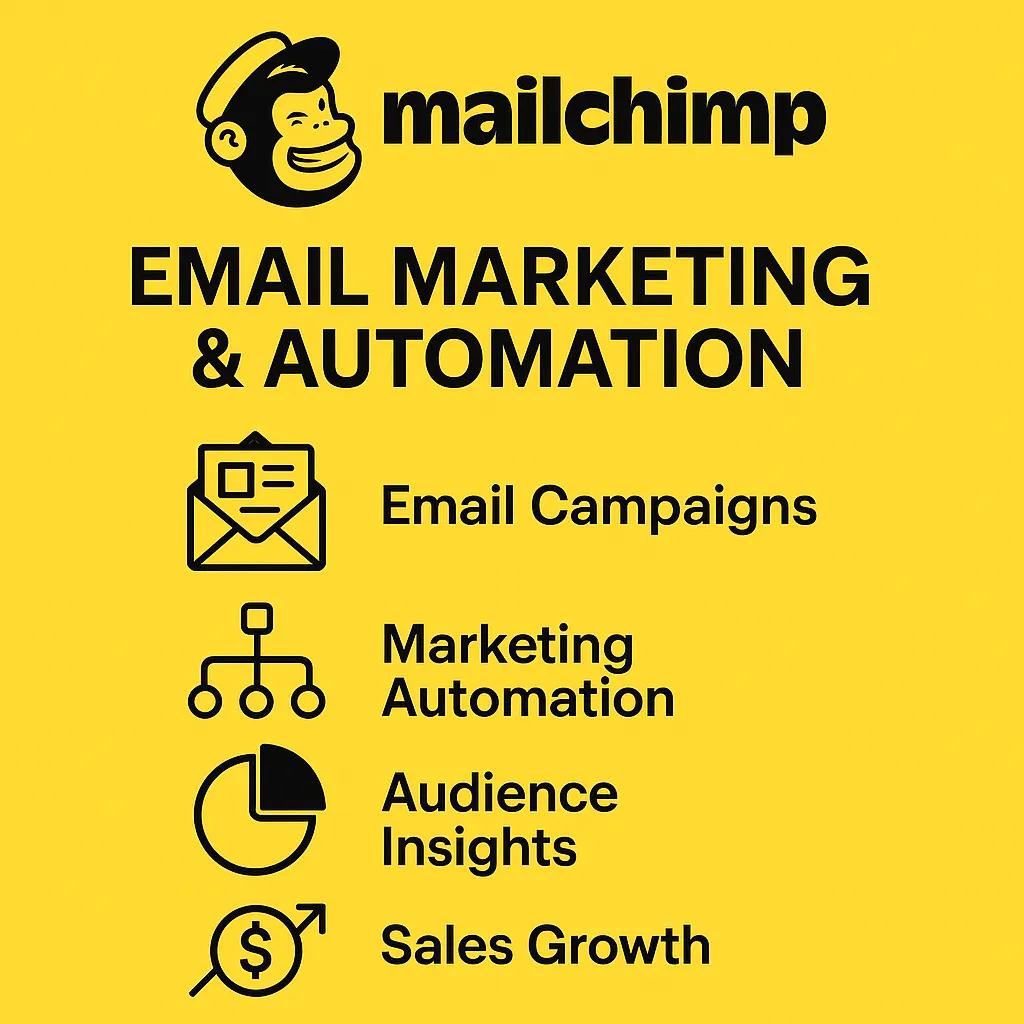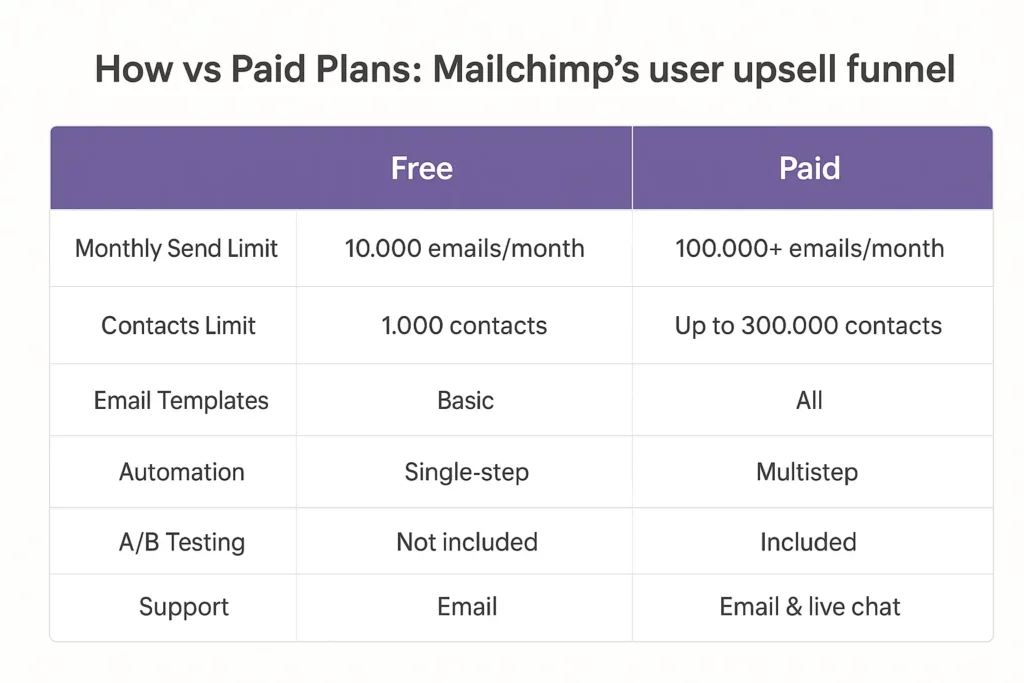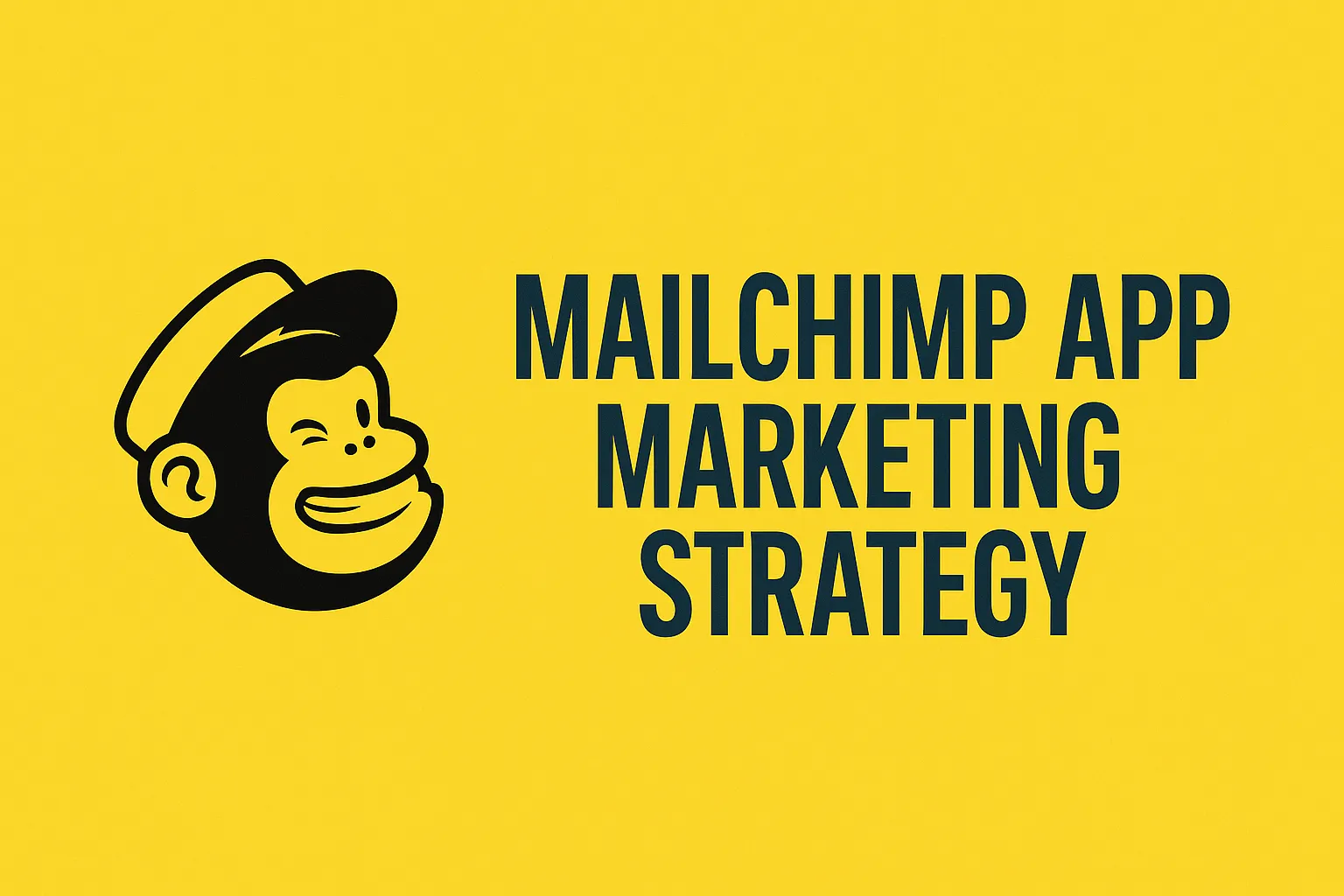Ever felt like you’ve crafted the perfect product, but nobody’s opening the metaphorical email?
Welcome to startup life — where launching your app is just Act I, and Act II is all about showing up in inboxes, notifications, and hearts. Whether you’re building the next email automation tool, a Mailchimp clone, or an AI-powered CRM sidekick, getting users to care is the hardest part.
Here’s the thing — Mailchimp didn’t become a household name overnight. It used charm, consistency, and a marketing strategy sharp enough to cut through inbox clutter. And today, we’re diving deep into how Mailchimp pulled it off, and how you can reverse-engineer that success for your own app. Spoiler: It’s not about sending more emails — it’s about sending the right message, to the right human, at the right time.
Let’s unpack the playbook, the pitfalls, and the power moves that helped Mailchimp soar — and how Miracuves can help you build and grow your version of this marketing magic.

The Mailchimp Origin Story: Email with Personality
Back in the early 2000s, most email tools felt like fax machines — functional, boring, and soul-crushing. Then came Mailchimp, swinging in with fun monkey mascots and quirky copy. That was the hook. But behind the humor was a deeply strategic approach:
- Freemium model to drive adoption.
- A no-nonsense UI/UX that even your grandma could figure out.
- Smart integrations with e-commerce, CRMs, and landing page tools.
- Automated marketing workflows that made users feel like pros.
Mailchimp didn’t just market to people; it empowered them to market smarter. And that was revolutionary.
Learn More: Build an App Like Mailchimp in 2025 – Full-Stack Developer Guide
User-Centric Branding: Making It Human, Not Corporate
Most SaaS apps talk like robots. Mailchimp? Total opposite.
Their branding — from Freddie the chimp to the playful tone — made it feel like a friend helping you grow your business, not another software subscription.
Key Takeaways for App Creators:
- Speak like a human. Write copy like you’d talk to a friend at a café.
- Use mascots or visual identity that feels relatable.
- Lean into emotion — startups, especially, are run by passionate people.
Freemium Funnel: The Growth Engine That Never Sleeps
Mailchimp’s biggest marketing masterstroke?
Freemium + viral triggers. Users could start for free and only pay as their list grew. Combine that with:
- Branded email footers (“Powered by Mailchimp”) that reached millions.
- Referral incentives for agencies and small businesses.
- Embedded forms and integrations that turned every user into a mini-marketer.
Smart Automation: More Time, Less Manual Hustle
Automation wasn’t just a feature; it was a marketing moat. Mailchimp positioned itself as the anti-hustle tool — doing the heavy lifting while creators slept.
Marketing Features That Sold Themselves:
- Welcome sequences
- Abandoned cart nudges
- Customer re-engagement workflows
- A/B testing subject lines and CTAs
If you’re building a Mailchimp-like app, automation should be baked into both your product and marketing story.
Educational Content & Creator-Led Campaigns
Mailchimp didn’t just sell features; they taught marketing.
Their “Mailchimp Presents” content hub offered mini-documentaries, how-to guides, and podcasts — not just about email, but about entrepreneurship.
Why It Worked:
- Built trust by being helpful, not salesy.
- Attracted creators, startups, and makers (aka, their target market).
- Boosted SEO and long-tail visibility.
Startups: Want to 10x visibility? Build a content engine that answers your users’ questions before they even sign up.
Data-Driven Personalization: Every User Feels Seen
Behind the scenes, Mailchimp ran like a precision watch. Users got personalized dashboards, tailored email suggestions, and AI-backed recommendations.
And guess what? Those personalization features became retention gold.
- Suggested send times based on open rates
- Pre-built audience segments
- Smart subject line assistants
Community Building: Not Just Software, a Movement
Mailchimp cultivated communities of marketers, creators, and e-commerce entrepreneurs. Think webinars, user groups, creator showcases, and even a branded podcast.
Actionable Tip for You:
If you’re building a marketing SaaS or Mailchimp-style tool, create a user-first ecosystem:
- Slack or Discord community
- User spotlights and case studies
- AMA sessions with founders or power users
Miracuves can help integrate community features right inside your clone app — think discussion boards, activity feeds, and user showcases.
Learn More: Mailchimp Features That Help Your Business Grow
Performance Marketing + Storytelling = Magic
Mailchimp didn’t go all-in on ads. Instead, they blended:
- SEO-rich landing pages
- Playful video campaigns (remember the “Did You Mean Mailchimp?” YouTube series?)
- Podcast sponsorships that felt native, not intrusive
Their marketing didn’t feel like marketing. It felt like storytelling with a strategy.
According to Statista, Mailchimp’s active user base ballooned to over 14 million by focusing on brand-driven, trust-led growth tactics.
App Store Optimization (ASO): The Unsung Hero
Most people forget Mailchimp has mobile apps too — and they crush it on the App Store.
Here’s why:
- Keyword-rich descriptions
- 1,000s of real user reviews
- Constant UI/UX updates
- Smart push notification strategies
If you’re launching a Mailchimp clone, don’t ignore ASO. It’s free real estate.
Want your own Mailchimp-style app clone? Check out our Build Your Own SaaS App solution at Miracuves.

Conclusion
Mailchimp’s strategy wasn’t about luck. It was a well-oiled machine built on:
- Freemium flywheels
- Brand personality
- Smart education
- Automation-first experiences
- Loyal user communities
Want your own email marketing tool to break through the noise? Copy the strategy, not just the features.
At Miracuves, we help innovators launch high-performance app clones that are fast, scalable, and monetization-ready. Ready to turn your idea into reality? Let’s build together.
FAQs
What made Mailchimp’s marketing so effective?
Mailchimp combined a freemium model with clever branding, educational content, and a strong community focus — it wasn’t just software, it was storytelling.
Can I launch a Mailchimp-like app and stand out?
Absolutely. If you focus on niche audiences, simplify the UX, and offer innovative automation — there’s room to grow. Plus, solid marketing helps.
How important is automation in Mailchimp’s success?
Critical. Mailchimp’s “set it and forget it” workflows were game-changers for users with no marketing background. Automation = retention.
What if my app isn’t fun or quirky — can I still compete?
Yes. Personality isn’t about being silly. It’s about being real. Build trust, be consistent, and speak human — that’s what wins hearts.
Is ASO really necessary for SaaS apps?
If your app’s on iOS/Android, then yes. App Store Optimization helps organic discovery, especially for solopreneurs browsing tools on the go.
How can Miracuves help me build a Mailchimp alternative?
Miracuves offers Mailchimp-style clone development, customizable marketing workflows, drag-and-drop builders, and integration-ready architectures — all built to scale.








